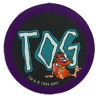Currently there's a lot of media and aid-organizaton attention to the drought on Africa's Horn (http://en.wikipedia.org/wiki/2011_Horn_ ... ca_drought).
Can such "urgent" interventions (like water and food to the people hit by the drought) be as cost-effective, or even more cost effective than top GWWC recommendations? (http://www.givingwhatwecan.org/resource ... rities.php)
The Swedish Red Cross (http://redcross.se/teman/torka-ostra-afrika/ge-en-gava/
claims that 1 month of food can be supplied for about a dollar, based on
calculations from the 2011 Kenya drought (they didn't disclose any
sources). If true, that seems very cost-effective, assuming that there'
people who dont get relief-food will die and that the drought will have
an expected lenght of say 6 months. Also, it would still be a candidate
for top-effectiveness, even if it would be an order of magnitude off.
Some caveats otomh. First, perhaps UN and people who do non-optimal
philanthropy will supply all the needed food. Second, one can't use the
useful method of automatic transferrals for donors. (But perhaps there
are/or one could create charities which save up funds for this type of
occasion. And there's also the GWWC pledge for members) Third, perhaps
earmarked donations will have a similar effect as general donations to
the organizations doing the urgent aid work (due to them transferring
money internally).
Also, GiveWell (http://www.givewell.org/international/disaster-relief) are skeptical about disaster relief. However, the discussion in that post focuses on the problems of relief for disasters causing physical damage (eg earthquakes), not droughts, which seem importantly different (eg it seems the aid isn't only relatively effective during the first hours or days, but for much longer since starvation takes time to kill people).
Can such "urgent" interventions (like water and food to the people hit by the drought) be as cost-effective, or even more cost effective than top GWWC recommendations? (http://www.givingwhatwecan.org/resource ... rities.php)
The Swedish Red Cross (http://redcross.se/teman/torka-ostra-afrika/ge-en-gava/
claims that 1 month of food can be supplied for about a dollar, based on
calculations from the 2011 Kenya drought (they didn't disclose any
sources). If true, that seems very cost-effective, assuming that there'
people who dont get relief-food will die and that the drought will have
an expected lenght of say 6 months. Also, it would still be a candidate
for top-effectiveness, even if it would be an order of magnitude off.
Some caveats otomh. First, perhaps UN and people who do non-optimal
philanthropy will supply all the needed food. Second, one can't use the
useful method of automatic transferrals for donors. (But perhaps there
are/or one could create charities which save up funds for this type of
occasion. And there's also the GWWC pledge for members) Third, perhaps
earmarked donations will have a similar effect as general donations to
the organizations doing the urgent aid work (due to them transferring
money internally).
Also, GiveWell (http://www.givewell.org/international/disaster-relief) are skeptical about disaster relief. However, the discussion in that post focuses on the problems of relief for disasters causing physical damage (eg earthquakes), not droughts, which seem importantly different (eg it seems the aid isn't only relatively effective during the first hours or days, but for much longer since starvation takes time to kill people).





